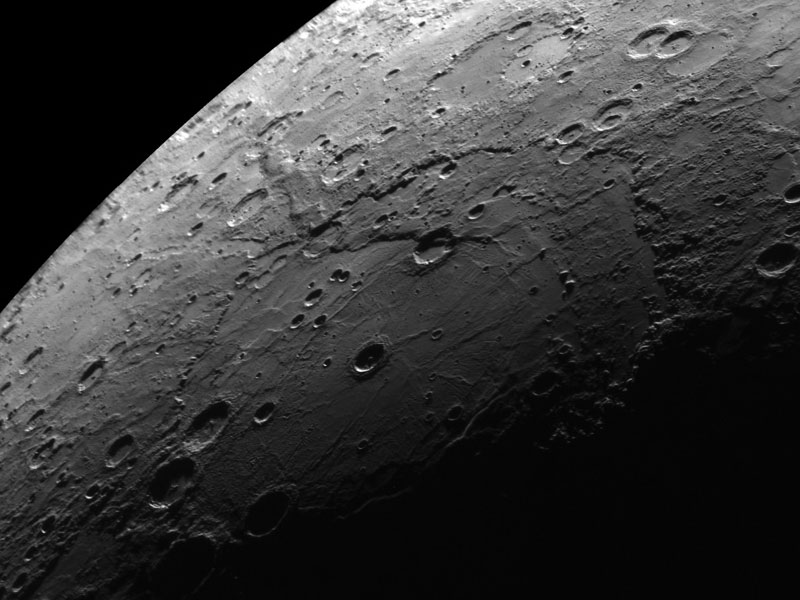Explanation: Why do portions of this huge crater on Mercury have so much iron? The unusual Rembrandt impact basin was discovered recently in images taken during the robotic MESSENGER spacecraft's 2008 October flyby of the Solar System's innermost planet. The unusual Rembrandt spans over 700 kilometers and at 4 billion years old is possibly the youngest large impact basin on the planet. Multicolored images of the crater floor, however, indicate reflections from areas containing unusually high amounts of iron and titanium. These elements indicate that some exposed materials have not been covered by more recent lava floes, and so might originate from an epoch of Mercury's formation. Data from Rembrandt and across Mercury are now being interpreted as indicating a relatively active and volcanic past for Mercury that includes surface tectonics. Close inspection of the above image will reveal rings of Mercury's Rembrandt impact basin circling around the image center. Mercury's limb is visible on the upper left, high cliffs and small craters are visible inside Rembrandt, and the terminator between night and day runs diagonally through the image. MESSENGER is on track to fly past Mercury again this September and enter orbit around Mercury in 2011.
1999 2000 2001 2002 2003 2004 2005 2006 2007 2008 2009 2010 2011 2012 2013 2014 2015 2016 2017 2018 2019 2020 2021 2022 2023 2024 2025 |
Yanvar' Fevral' Mart Aprel' Mai Iyun' Iyul' Avgust Sentyabr' Oktyabr' Noyabr' Dekabr' |
NASA Web Site Statements, Warnings, and Disclaimers
NASA Official: Jay Norris. Specific rights apply.
A service of: LHEA at NASA / GSFC
& Michigan Tech. U.
|
Publikacii s klyuchevymi slovami:
Mercury - Merkurii
Publikacii so slovami: Mercury - Merkurii | |
Sm. takzhe:
Vse publikacii na tu zhe temu >> | |
